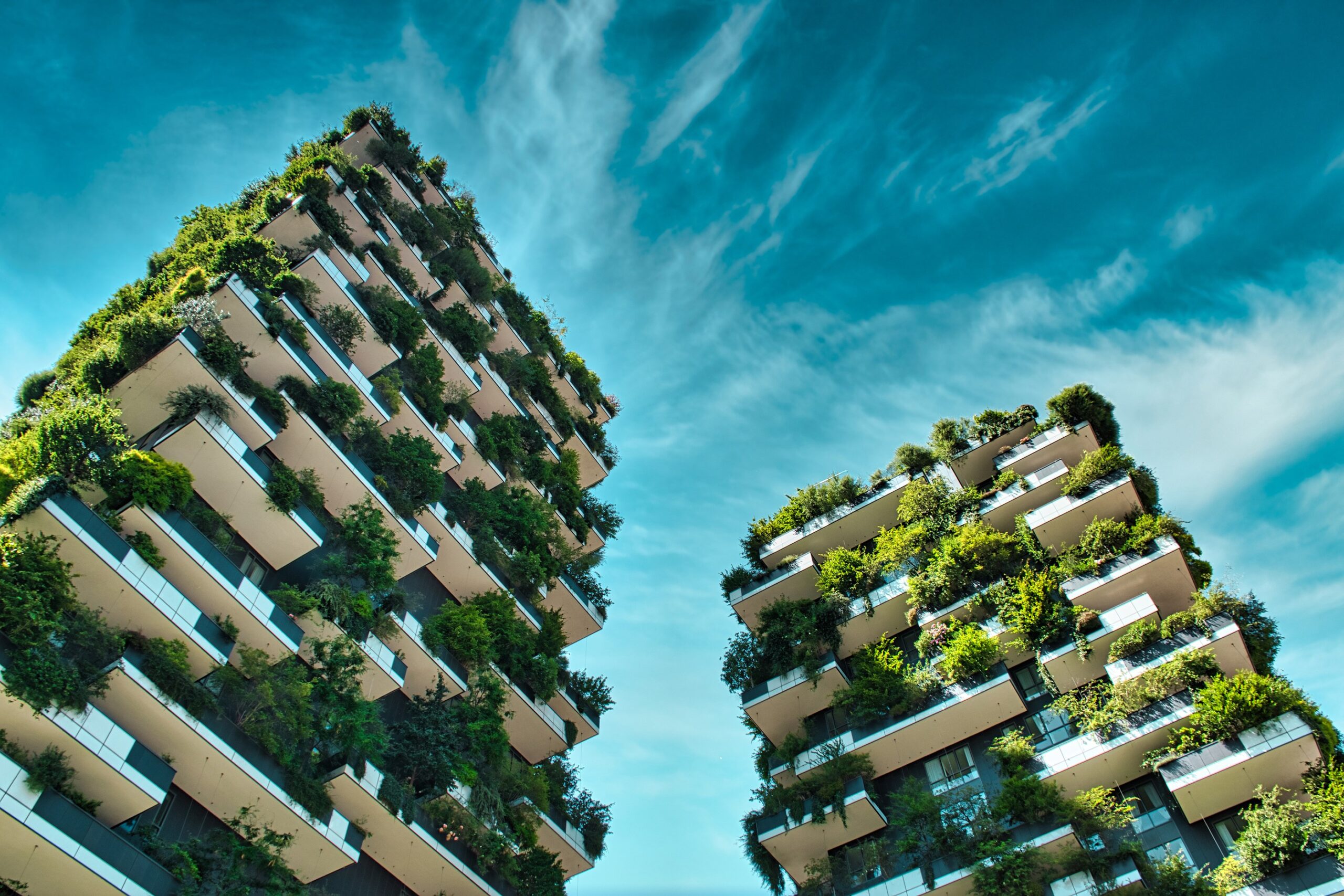The image of skyscrapers and buildings draped in greenery and natural forestry is for many of us, a dystopian one. In recent years, pop culture has frequently laid claim to the post-apocalyptic setting in which humans are absent and nature has reclaimed the Earth. There is, however, an alternative.
The Solarpunk movement
Beginning with the Solarpunk literary movement in the 1980s, the utopian vision of the ‘urban forest’ has captured the imagination of environmentalists the world over. Belgian ecological architect Vincent Callebaut for example, produced perhaps one of the most innovative green-city designs when tasked with envisioning how Paris could reduce its carbon emissions and defend itself against climate change.
Commissioned by the capital’s City Hall in 2014, Callebaut was asked to conceive of eight prototypes of ‘energy-plus towers’. The blueprint for the potential green infrastructure offers a fascinating insight into what urban buildings could look like if they were built around bioclimatism and sustainable energies. In addition to their visual aesthetic, the designs boast a number of solar and hydrodynamic features that could offer a sustainable alternative to depleting conventional energy resources.
The Mountain Towers proposed for Rue De Rivoli, for example, are set to consist of three types of renewable energies in each tower: ‘During the day, two huge photovoltaic and thermal solar shields, bio-inspired by the structure finely cut from dragonfly wings, will produce electricity and hot sanitary water. At night, a reversible hydro-electrical pumped station will let an urban cascade flow out from the top of the tower between to basins of rainwater retention tanks located at different levels, preventing the need of batteries to store the electricity produced by the solar dragonfly wings. Finally, the garden balconies will surround the inhabited storeys and filter in clean recycled waters rejected by the inhabitants by phyto-purification and bio-composting’.
A blueprint for the future?
If set in motion, it is believed that the construction of such eco-friendly designs could play a vital part in the drive to cut Paris’ carbon emissions by 75 per cent before 2050. This is significant because the UK government has gone one step further than its European neighbours, promising to reach a net-zero carbon emission basin for 2050. Laid out in their Energy White Paper Plan, the Conservative Party has set itself an ambitious target to reach considering that emissions are anticipated to rebound in the years to come as the economy begins its post-lockdown recovery.
Worse still, much of what the Secretary of State, Dominic Raab, has promised is based on the future investment in carbon-capture technology that does not yet exist in the sheer quantity required for such an operation. Therefore, this makes the interim goals, such as a reduction in 10 per cent of emissions by 2025 very unlikely. It is thus imperative that we begin to devise more immediate and practical solutions that reintegrate the natural world into the urban landscape in an urgent, symbiotic manner.
The concept of the ‘eco-city’ has been around since at least 1987 when Richard Register introduced the term and defined it as: ‘a city designed by taking into account their impacts on the environment, in the sense of minimising waste production and pollution, as well as the inputs of energy, water and food. These targets also constitute the principles of sustainable urban development’. In this light, the enormous anthropogenic pressure that bustling city centres create could realistically be alleviated if the totality of an industrial area was treated as a living organism with a complex, but equally manageable metabolism.
Rewilding the modern metropolitan
The development of green infrastructure should be understood as a restoration project, a revival of a metropolitan ecosystem that has become dangerously nonexistent. An increase in natural biodiversity that is partly man-managed would utterly transform the urban setting both visually and physically for the better. Take, for example, the Bosco Verticale (Vertical Forest) in Milan that has become a world-renowned, structurally captivating piece of architecture. Designed by Italian urban designer Stefano Boeri, the expressive biophilic language of the garden walls convey a connectivity to the natural environment that is both direct and mutually beneficial.

Not only does the space provide a home for nearly 900 trees, 11,000 plants and 5,000 shrubs, it is also richly inhabited by wildlife that ranges from birds, bees, butterflies, other insects and much more. The complex network of flora and fauna creates a microclimate that produces oxygen, regulates humidity and absorbs carbon dioxide and pollution from the atmosphere. Praised for its exemplary sustainability, the architectural feat has already received a number of prestigious accolades, such as the Frankfurt International Highrise Award in 2014.
As office spaces across the UK continue to remain empty and retail giants, such as GAP and many more, pull stores from the high street, it may be argued that we should readily embrace such a biophilic approach to future urban development. Rather than the suggested construction of further living spaces, Nottingham Wildlife Trust has proposed a post-Covid ‘rewilding’ of the nation’s desolate city centres. As part of the government’s ambitious plan to plant 30,000 hectares of trees annually, the concept of the urban jungle could very well offer a genuine opportunity to increase climate resilience and environmental congruity. While there are no official plans to begin construction on a green city landscape, the potential to create a brighter future begins with speculating about the changes that we want to see in the world.
DISCLAIMER: The articles on our website are not endorsed by, or the opinions of Shout Out UK (SOUK), but exclusively the views of the author.



